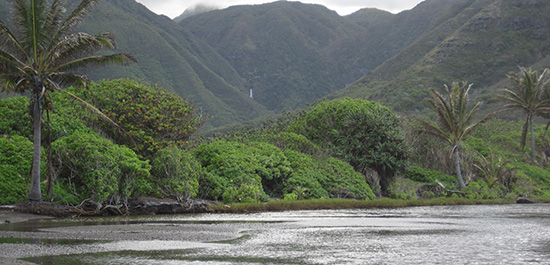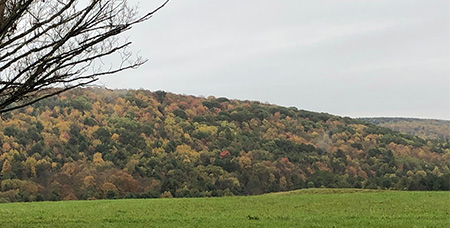Native Plant Conservation Campaign News: Conserve and restore native forests to help fight climate change, studies show.
June 18, 2020
NPCC News has extensively discussed the many ways in which conservation and restoration of native plants benefit human societies and economies. These include cleaner air and water, improved mental and physical health, buffering of local climates, protection from storms and floods, and of course creation of habitat for pollinators and other wildlife.

New studies suggest an addition to that list: native forests are more effective than nonnative forests in the sequestration of greenhouse gases in the fight against climate change.
International efforts have been launched to plant billions of trees to absorb carbon and combat climate change.
Unfortunately, however, poorly thought out tree planting can cause more harm than good. For example, many climate focused tree projects put trees in habitats where they do not naturally occur, such as peat bogs or even natural grasslands, reducing delivery of ecosystem services and destroying wildlife habitat.
Also, numerous countries have proposed to establish plantations or other nonnative tree monocultures (single species forests). However, research increasingly shows plantations of nonnative trees deliver inferior carbon sequestration services compared to native or “natural” forests.
As a 2019 article in the journal Nature Restoring Natural Forests Is The Best Way To Remove Atmospheric Carbon reported “plantations hold little more carbon, on average, than the land cleared to plant them. Clearance releases carbon, followed by rapid uptake by [nonnative plantation] trees such as Eucalyptus and Acacia. But after … trees are harvested and the land is cleared for replanting …. carbon is released again by the decomposition of plantation waste and [timber] products."
 Further, a 2020 study compared carbon storage by “natural forests” and monoculture plantations that had not been logged for more than 40 years. Even in the absence of periodic logging and replanting, natural forests stored up to 30-50% more carbon than plantations. In addition, carbon storage over time was much more consistent and resilient in diverse native-dominated forests. Resilience is particularly important as we confront climate change, pests and other novel challenges.
Further, a 2020 study compared carbon storage by “natural forests” and monoculture plantations that had not been logged for more than 40 years. Even in the absence of periodic logging and replanting, natural forests stored up to 30-50% more carbon than plantations. In addition, carbon storage over time was much more consistent and resilient in diverse native-dominated forests. Resilience is particularly important as we confront climate change, pests and other novel challenges.Finally, a June 2020 study published in the journal Science suggested that planting of nonnative trees can actually increase the release of carbon dioxide from decomposition of soils and leaf litter. The increase was attributed to changes in the soil food web associated with nonnative plants. The authors cite past findings that decomposition and release of carbon increased by up to 100% in ecosystems invaded by nonnative plants.
As the planet grapples with its response to climate change, scientists agree, among other things, that
- Conservation and restoration of diverse, native-dominated forests in their natural habitats is the best way tree planting can reduce climate change.
This principle is gaining acceptance. In January, the Nature Based Solutions Initiative at Oxford University released four Principles For The Development Of Sustainable And Successful Nature Based Solutions to climate and other crises. Two of the four Principles discussed inappropriate tree planting:
“2. ....Currently, . .. pledges for nature focus on forests, but other ecosystems are also rich in carbon and biodiversity and support the livelihoods of millions of people. It is essential to prevent inappropriate tree-planting on naturally open ecosystems such as grasslands, savannas, and peatlands.
…
4. ….Successful Nature Based Solutions avoids large-scale tree-planting with single, non-native species or low diversity plantations. ..Low diversity plantations typically store less carbon, compromise water availability, have lower biodiversity value, are more susceptible to pests, diseases, fire and climate extremes, and can exacerbate poverty.”
Additional Information:
- Read more the effects of nonnative plants on decomposition and carbon release in the article Planting Non-Native Trees Accelerates Carbon Release Back Into the Atmosphere
- Read more in article When Tree Planting Actually Damages Ecosystems
- Learn more about the Nature Based Solutions Initiative at Oxford University
- Read about native plant ecosystem services and nature based solutions to climate change and other crises on the NPCC website